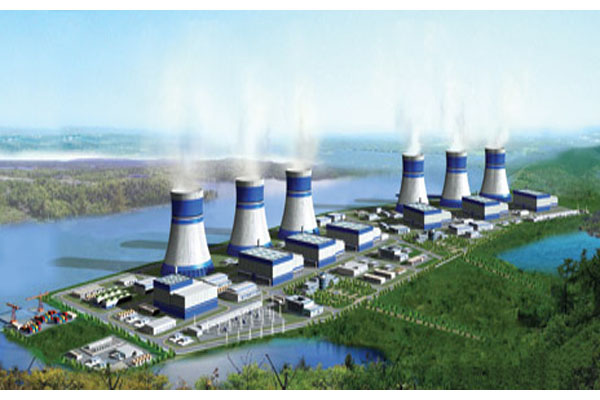
Dr. Mark Cooper, senior fellow for economic analysis at the Vermont Law School’s Institute for Energy and the Environment, this morning released a major new paper asserting that large-scale development of “small modular reactors” (SMRs) likely would cost $90 Billion–an amount that likely would be diverted from development of much more cost- and climate-effective renewable energy.
The Department of Energy and some in the nuclear industry (most recently Exelon CEO Cristopher Crane, who touted SMRs at a Resource for the Future (RFF) conference this week ) see SMRs as potentially less expensive and less difficult to site than traditional large reactors. The DOE has given several hundred million dollars in grants for initial development of the concept, but companies trying to develop them with private funds so far have failed. The report notes, “Two of the leading U.S. developers have announced they are throttling back on the development of SMR technology because they cannot find customers (Westinghouse) or major investors (Babcock and Wilcox). The harsh judgment of the marketplace on SMR technology is well-founded.”
Said Dr. Cooper, “Large reactors have never been economically competitive and there is no reason to be believe that smaller reactors will fare any better. Giving nuclear power a central role in climate change policy would not only drain away resources from the more promising alternatives, it would undermine the effort to create the physical and institutional infrastructure needed to support the emerging electricity systems based on renewables, distributed generation and intensive system and demand management. My paper shows that nuclear power – whether the reactor is large of small–is among the least attractive climate change policy options (too costly, too slow, and too uncertain) and is likely to remain so for the foreseeable future.”
But it is exactly the climate issue that nuclear backers are hoping to seize on. At the same RFF meeting, Exelon’s Crane also said that states should replace existing renewable energy standards with new “clean energy standards” that would include nuclear power as part of their strategies to reduce carbon emissions under forthcoming rules expected from the Environmental Protection Agency. In reality, if such a strategy were adopted for existing reactors, as Crane desires, it would actually increase carbon emissions from what otherwise would be achievable from deployment of new renewable energy sources. In Maryland, for example, nearly all of the state’s current 20% renewable standard would be met simply by keeping the existing two units at Calvert Cliffs operating, rather than by installing new renewables. It’s a con game, but it’s one that will escalate in coming months.
Other key findings in Dr. Cooper’s report are:
• Scaling up of SMRs would soak up financing for wind and solar power: “While each individual reactor would be smaller, the idea of creating an assembly line for SMR technology would require a massive financial commitment. If two designs and assembly lines are funded to ensure competition, by 2020 an optimistic cost scenario suggests a cost of more than $72 billion; a more realistic level would be over $90 billion. This massive commitment reinforces the traditional concern that nuclear power will crowd out the alternatives. Compared to U.S. Energy Information Administration (EIA) estimates of U.S. spending on generation over the same period, these huge sums are equal to: three-quarters of the total projected investment in electricity generation; and substantially more than the total projected investment in renewables.”
• Costs of SMRs will be higher than large reactors, not lower: “Even industry executives and regulators believe the SMR technology will have costs that are substantially higher than the failed “nuclear renaissance” technology on a per unit of output. The higher costs result from: lost economies of scale in containment structures, dedicated systems for control, management and emergency response, and the cost of licensing and security; operating costs between one-fifth and one-quarter higher; and decommissioning costs between two and three times as high.”
• Focusing on SMRs would heighten the growing war between nuclear power and renewables: “The physical and institutional infrastructure to support an active 21st century electricity system is markedly different from and antithetical to the passive, one-way grid on which nuclear relies. In response, even though nuclear technologies have received 10 times as much subsidy on a life cycle basis, nuclear advocates attack the much smaller and more productive subsidies received by renewables. To save nuclear power they propose to jerry-rig markets with above-market prices to increase nuclear profits and remove the regulatory institutions that have allowed alternatives to enter the electricity resource mix.”
The full report, “The Economic Failure of Nuclear Power and the Development of a Low-Carbon Electricity Future: Why Small Modular Reactors Are Part of the Problem, Not the Solution,” is available on NIRS website here.
Michael Mariotte
May 15, 2014
Permalink: https://www.nirs.org/2014/05/15/your-choice-you-cant-have-both/
You can now support GreenWorld with your tax-deductible contribution on our new donation page here. PayPal now accepted. We gratefully appreciate every donation of any size–your support is what makes our work possible.
Comments are welcome on all GreenWorld posts! Say your piece above. Start a discussion. Don’t be shy; this blog is for you.
If you like GreenWorld, you can help us reach more people. Just use the icons below to “like” our posts and to share them on the various social networking sites you use. And if you don’t like GreenWorld, please let us know that too. Send an e-mail with your comments/complaints/compliments to nirs@nirs.org. Thank you!
Note: If you’d like to receive GreenWorld via e-mail daily, send your name and e-mail address to nirs@nirs.org and we’ll send you an invitation. Note that the invitation will come from a GreenWorld@wordpress.com address and not a nirs.org address, so watch for it.




Ha !!! SMR’s… the nukie cheerleeders are SOOOOO desperate… The only real product of atomic energy is the radioactive waste…and all the radioactive gifts we will be burdened with for 100,000+ years.